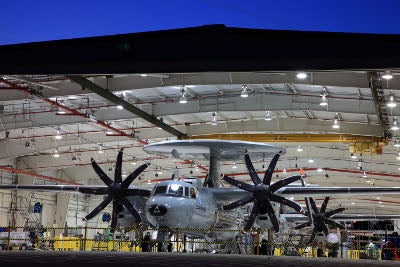
The US Navy has awarded a $113.7m advance acquisition contract to Northrop Grumman for long lead materials and related support for five full-rate production Lot 2 E-2D Advanced Hawkeye aircraft.
Capable of providing threat identification and positional data to fighter aircraft such as F-14 Tomcats, while operating at an altitude of above 25,000ft, the Hawkeye all-weather airborne early-warning aircraft features new radar, theatre missile defence capabilities and multisensor integration.
Northrop Grumman Aerospace Systems E-2/C-2 programmes vice-president Bart LaGrone said the company will provide a more affordable airborne early warning, command and control solution for the US Navy.
"This contract award, along with OSD’s full-rate production decision, is a testament to the commitment and dedication of the entire E-2D team to deliver on its promise of a mature, capable and effective E-2D Advanced Hawkeye," LaGrone said.
The aircraft can be used by the US Navy to conduct strike command and control, surveillance, guidance of search and rescue missions and as a relay to extend the range of communications.
In addition to the tactical glass cockpit, AN/APY-9 solid-state and electronically steered UHF radar, the aircraft is fitted with a transmitter, receiver and identification friend-or-foe system and provides in-flight refuelling capability to extend mission endurance up to nine hours.
The contract brings the total current procurement of E-2D aircraft to 30, including low-rate initial production and full-rate production aircraft.
The US Navy had received the 10th E-2D Advanced Hawkeye in June while the initial operational capability is scheduled for 2015.
Around ten additional aircraft are currently under various stages of manufacturing and pre-delivery flight-testing at the company’s Aircraft Integration Center of Excellence, in St. Augustine in Florida.
Image: Northrop-built E-2D Advanced Hawkeye aircraft at a facility. Photo: courtesy of Northrop Grumman Corp.





